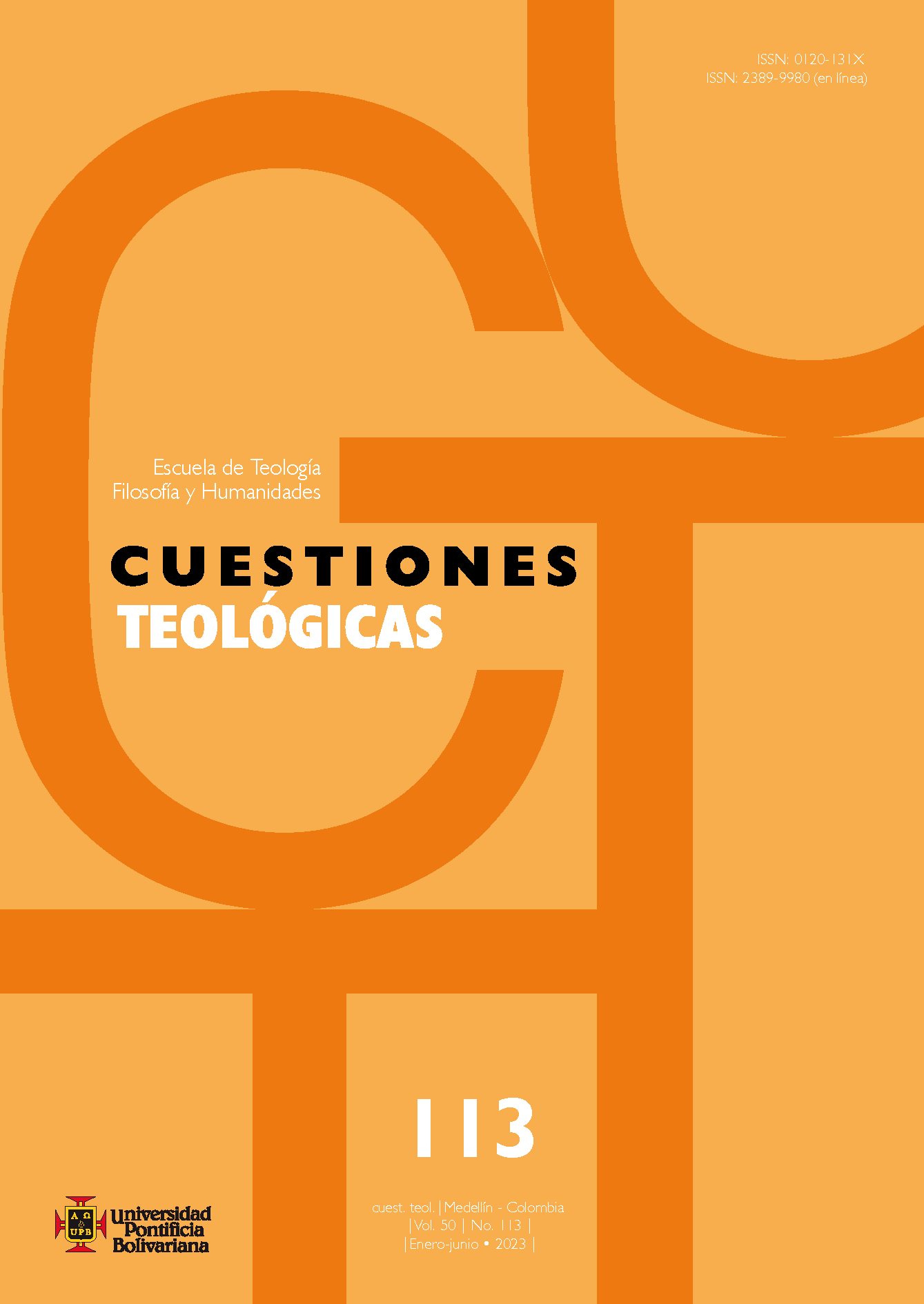The strategy of coexistence in the First Letter of Peter. An example of the application of the sociological method 'spatial critique'
Main Article Content
Abstract
The objective of this work is to offer a new reading key of the strategy of the First Letter of Peter. The result is the product of a sociological exegesis based on the methodology that spatial critique proposes to apply to the object of study; as an example, 1 Peter 2:11-17 is analyzed. The contribution of these methodological tools is the appreciation of the emphasis, points of encounter and differences between the prevailing ideology in Mediterranean society in the 1st century and the discourse of the letter. The study of the spatial categories first, second and third space applied as heuristic questions to a representative fragment of the letter offers results that allow proposing a new appreciation of the author's strategy, the transformation of spaces of coexistence through the good conduct of the believers
References
Aguirre, R. (2010). Así empezó el Cristianismo. Estella: Verbo Divino.
Aristóteles. (2007). El arte de la retórica. (Trad. I. Granero). Buenos Aires: Eudeba
Balch, D. (1981). Let Wives be Submissive: The Domestic Code in 1 Peter. Atlanta: Scholars Press.
Biblia Bilingüe (2020). Estella: Verbo Divino.
Brox, N. (2012). La primera carta de Pedro. Salamanca: Sígueme.
Elliott, J. y Via, D. (1993). What is social-scientific criticism. Minneapolis: Fortress.
Elliott, J. y Via, D. (1995). Un hogar para los que no tienen patria ni hogar: Estudio crítico social de la Carta primera de Pedro y de su situación y estrategia. Estella: Verbo Divino.
Elliott, J. y Via, D. (2000). 1 Peter: A New Translation with Introduction and Commentary. New Haven: Yale University Press. https://doi.org/10.5040/9780300261769
Esler, P. (1994). The First Christians in Their Social Worlds: Social-Scientific Approaches to New Testament Interpretation. London: Routledge.
Garnsey. P., Saller. R. (1990). El impero romano. Economía, sociedad y cultura. Barcelona: Crítica.
Holloway, P. (2009). Coping with Prejudice. Tübingen: Mohr Siebeck. https://doi.org/10.1628/978-3-16-151533-0
Horrell, D. (2008). 1 Peter. London: T&T.
Horrell, D. (2015). Becoming Christian: Essays on 1 Peter and the Making of Christian Identity. Bloomsbury: T&T.
Le Roux, E. (2018). Ethics in 1 Peter. Eugene: Pickwick.
Lefevre, H. (2020). La producción del espacio. Madrid: Capitán Swing.
Lozano, F. (2010). Un Dios entre los hombres. La adoración a los emperadores romanos en Grecia. Barcelona: Publicacions i Edicions.
Malina, B. (1992). Los evangelios sinópticos y la cultura mediterránea del siglo I. Estella: Verbo Divino.
Malina, B. (2002). El mundo social de Jesús y los evangelios: La antropología cultural mediterránea y el Nuevo Testamento. Santander: Sal Terrae.
Michaels, J. (1998). 1 Peter. Grand Rapids: Eedermans.
Musonio, R. (1995). Tabla de Cebes. (Trad. P. Ortiz). Madrid: Gredos.
Puig i Tàrrech, A. (2008). “I rapport tra Cristian e non Cristiani nella Prima Lettera di Pietro”. En Ciola, N., Puculcinelli, G. (eds.). Nuovo Testamento: Teologie in dialogo culturale. Bologna: EDV, (393-403).
Reyes, A. (2011). “La imagen como soporte de difusión ideológica en la provincia”. En Caballos, A., Lefebvre, S. (eds.). Roma generadora de identidades. Madrid: Universidad de Sevilla, (301-320).
Sartre, M. (2010). La Ciudad Antigua. Valencia: Universitat de València.
Schultz, M-J. (2022). La estrategia misionera de la Primera carta de Pedro: edificar un “casa espiritual” por medio de la buena conducta. Estella: Verbo Divino.
Schultz, M-J. (2016) La conducta como estrategia de evangelización en la Primera Carta de Pedro. Trabajo de fin de máster, conducente a la licencia en Teología Bíblica, Universidad Pontificia de Salamanca.
Scott, J. (1980). Los dominados y el arte de la resistencia. Bilbao: Txalaparta.
Soja, E. (1990). Postmetropolis. Los Ángeles: Traficantes de sueños.
Soja, E. (1991). “Thirdspace: Expanding the Scope of the Geographical Imagination”. En Massey, D., Allen, J., Sarre, P. Human Geography Today. Cambridge: Polity Press, (pp. 260-294).Talbert, C. (2010). Perspectives on First Peter. Oregon: Wipf & Stock.
Talbert, C. (2010). Perspectives on First Peter. Oregon: Wipf & Stock.
Támez, E. (2005). Luchas de poder en los orígenes del cristianismo. Santander: Sal Terrae.
Volf, M. (1994). “Soft Difference Theological Reflections on The Relation Between Church and Culture in 1 Peter”. Ex Audito, 10, pp. 15-30.
Williams, T. (2012). Persecution in 1 Peter: Differentiating and contextualizing early Christian suffering Leiden: Brill. https://doi.org/10.1163/9789004242012
Williams, T. (2014). Good Works in 1 Peter: Negotiating Social Conflict and Christian Identity in the Greco-Roman World. Tübingen: Mohr Siebeck. https://doi.org/10.1628/978-3-16-153252-8
Thurén, L. (1995). Argument and Theology in 1 Peter: The Origins of Christian Paraenesis. Sheffield: Journal for the Study of the New Testament.






